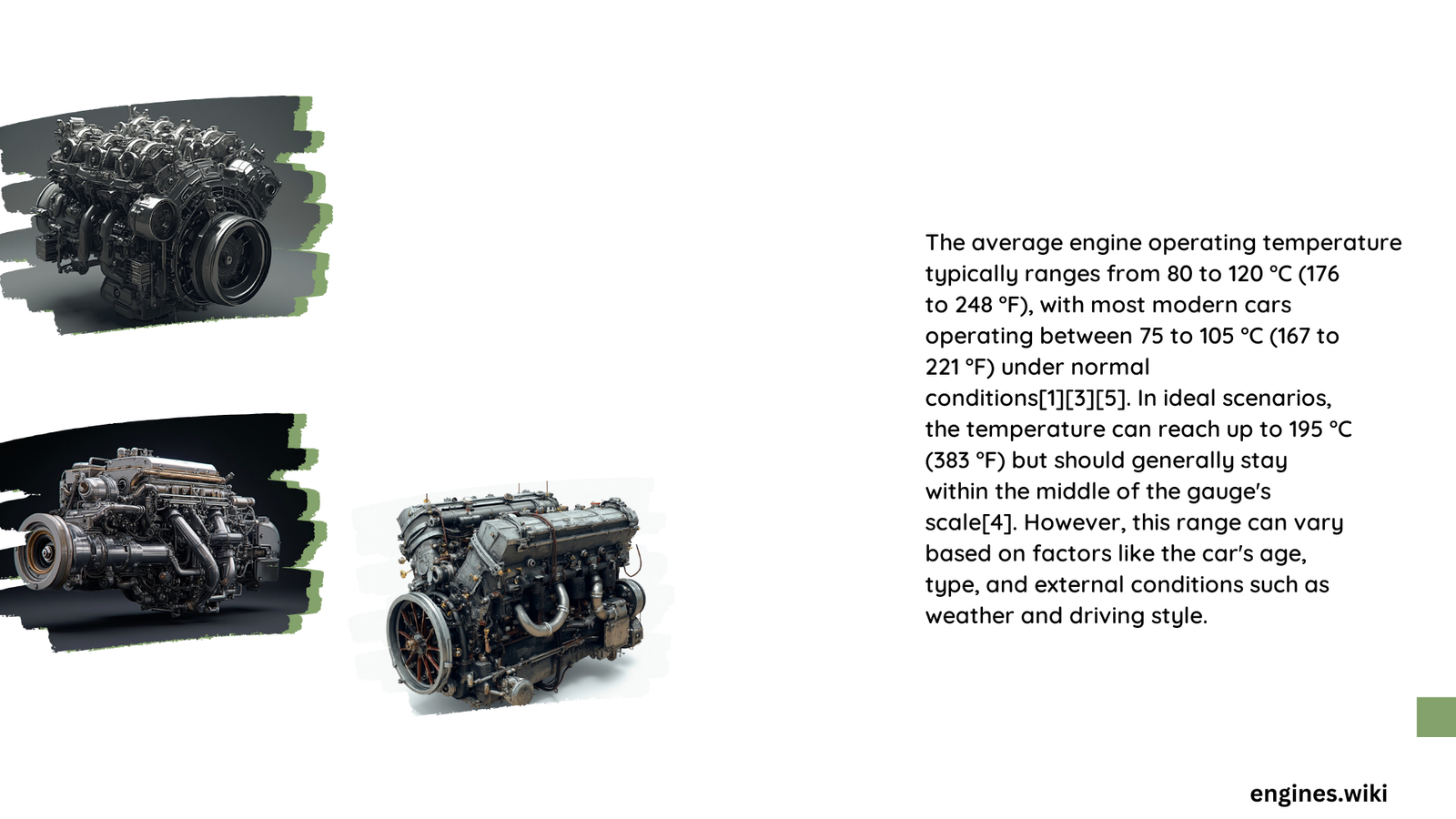Modern vehicles operate within a critical temperature range that ensures optimal performance, efficiency, and longevity. The average engine operating temperature typically spans 80 to 120 °C (176 to 248 °F), representing a delicate balance between thermal efficiency and mechanical preservation across various vehicle types and engine configurations.
What Determines the Average Engine Operating Temperature?
Vehicle engines are complex thermal systems designed to maintain precise temperature ranges. Multiple factors influence the average engine operating temperature, including:
Factors Affecting Engine Temperature
- Engine Type
- Gasoline engines
- Diesel engines
-
Hybrid powertrains
-
Vehicle Design
- Cooling system architecture
- Radiator efficiency
- Thermostat functionality
Temperature Range Breakdown
| Engine Type | Optimal Temperature Range | Typical Operating Zone |
|---|---|---|
| Gasoline | 80-120 °C | 90-105 °C |
| Diesel | 80-120 °C | 85-110 °C |
| Hybrid | 80-120 °C | 90-105 °C |
Why Does Engine Temperature Matter?

Maintaining the correct average engine operating temperature is crucial for several reasons:
- Prevents Mechanical Wear: Consistent temperatures reduce component stress
- Optimizes Fuel Efficiency: Proper thermal management enhances combustion
- Reduces Emissions: Stable temperatures promote cleaner combustion processes
Critical Temperature Thresholds
Engines experience different performance characteristics at various temperature points:
Low-Temperature Zones (Below 80 °C)
- Increased friction
- Reduced fuel efficiency
- Higher emissions
- Incomplete fuel combustion
High-Temperature Zones (Above 120 °C)
- Accelerated component wear
- Potential engine damage
- Increased risk of overheating
- Reduced lubrication effectiveness
How to Monitor Engine Temperature?
Vehicle owners can track engine temperature through several methods:
- Temperature Gauge
- Visual indicator on dashboard
- Typically displays temperature range
-
Provides real-time thermal status
-
Diagnostic Tools
- OBD-II scanners
- Advanced temperature monitoring systems
- Precise digital readouts
Maintenance Best Practices
To maintain optimal average engine operating temperature:
- Regular Coolant Checks
- Inspect fluid levels quarterly
- Use manufacturer-recommended coolant
-
Replace according to service intervals
-
Cooling System Maintenance
- Clean radiator fins
- Check hose integrity
- Verify thermostat functionality
Common Temperature-Related Issues
Potential problems affecting engine temperature include:
- Faulty thermostat
- Coolant leaks
- Blocked radiator
- Water pump malfunction
- Sensor inaccuracies
Troubleshooting Temperature Anomalies
- Check coolant levels
- Inspect cooling system components
- Verify thermostat operation
- Consult professional mechanic if persistent issues occur
Technical Insights
Modern engine management systems continuously monitor and adjust temperature through sophisticated algorithms, ensuring optimal thermal performance across diverse driving conditions.
Advanced Thermal Management Technologies
- Electronic thermostats
- Variable cooling fan speeds
- Predictive temperature control systems
- Integrated heat management algorithms
Conclusion
Understanding the average engine operating temperature is essential for maintaining vehicle health, performance, and longevity. Regular monitoring, proactive maintenance, and awareness of thermal dynamics contribute to sustained automotive excellence.
Pro Tip: Always consult your vehicle’s specific manual for precise temperature recommendations, as variations exist between manufacturers and models.
